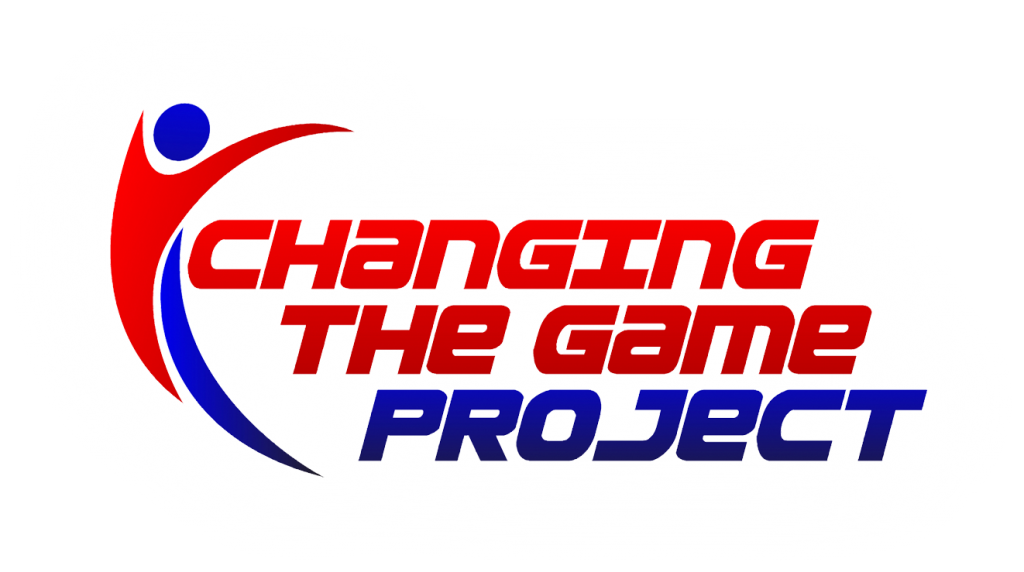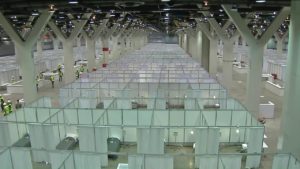We at HSP are following the news closely and keeping up with the potential impacts the pandemic will have on various tourism industries. This week, we are focusing on the sports tourism industry. We found the following article published on Changing The Game Project particularly insightful:
Reimagining Youth Sports in a Post-COVID-19 World
Written by: John O’Sullivan
Published on April 14, 2020
“When do you think we will play again, coach?”
“Will we finish our season, coach?”
“I sure miss practice, even the fitness!”
“What about tryouts?”
If you are part of a school or youth sports club, these are the questions you have been fielding on a daily basis. Since the state of Oregon closed down schools and sports in mid-March, like many coaches around the country, I have been running virtual practices, trying to stay connected and inspire kids to keep practicing. I have also been the guest on many webinars that are all asking the same question:
“What will youth sports look like when we return to play?”
And while many people are out there, hoping for a return to normalcy, the question that comes to mind for me is “Do we really want to return to the exact same youth sports system we just had to shut down?”
This is a question I have been pondering a lot recently, and have discussed numerous times with multiple experts in youth sports development. This Wall Street Journal article highlights concerns that we may lose 20-40% of our youth sports clubs to insolvency, and result in a huge drop in participation. After the 2008 recession, participation of US children dropped from 45% in 2008 to 38% in 2014, and the financial impact of this event will be far worse. It is unlikely many families are looking forward to high-priced, travel heavy youth sports experiences, especially for children still in elementary school. This system had already created a huge socio-economic participation imbalance, with more than twice as many children participating in sports in families with incomes over $100,000 than in the lowest income brackets. Is this what we want to return to?
I believe that this is the chance we have been waiting for to hit the reset button and make our youth sports system more athlete-centered, one that teaches character through sport, provides some semblance of balance, and is inclusive rather than exclusive when it comes to financial and time commitments. Why?
I truly believe that when we return to play, a number of factors will weigh heavily on the minds of parents:
- We just had family dinners night after night for the first time in years. I want my kids to go back to playing sports, but do we really want to be running around with our heads cut off 7 nights a week?
- My child is feeling healthy and well rested for the first time in years because he/she had some time off. Perhaps we should cut back a bit on the number of sports practices and training load.
- My child is enjoying the time-off and pursuing other passions. He/she is also getting better practicing on his/her own for the first time, or playing unorganized sports with siblings..
- This has been a tough hit financially for our family. Perhaps there is a better, less expensive local sports option.
- We already live in an area with millions of people, why do we need to travel by bus and plane to get games when we can get plenty of games close by?
- The virus has settled down in our area, but not in other places. I am not sending my child to play games against teams where the virus is not under control.
I could go on and on (and perhaps in the comments you can add some additional reasons). The factors are aligned to cause a major rethink in how youth sports, especially for 12 and under children, will be done. In a great webinar put on by the Aspen Institute Project Play Initiative, industry leaders predicted a summer or fall return to some sort of play, but that there will be a yearning for new models. As the panelists discussed, the existing model is dysfunctional at best and broken at worst. Parents and kids have rediscovered free play, family activities, and outdoor sports. Will they just want to go back to the old way with no adjustments? As Project Play Executive Director Tom Farrey stated, “It makes me wonder if we’ll see more enthusiasm or create a scenario for more in-town rec leagues and hold off the travel team environment. Instead of sorting the weak from the strong when they’re 6 or 7 years old, (can we) promote more low-cost, local activity that’s more inclusive and more affordable for more families, at least through grade school.”
But here is the billion dollar question:
Will our local leagues, park and recreation programs, YMCA’s, Boys and Girls Clubs, and even travel clubs be ready for this influx of participants looking for local, low cost, high quality programming?
They, too, are suffering and furloughing staff. But for the remaining staff, are you planning to roll out the same old programming that may no longer work and was inadequate at best, or will you take this opportunity to reimagine your program? As Nate Baldwin, youth sports expert and former Youth Sports Director for Appleton Parks and Recreation told me the other day, “Are they ready to provide a local, high quality experience, or just a return to the same old thing? Because you will never have a better chance to create a viable alternative to youth travel sports than you will when we return to play.” I agree wholeheartedly with Nate.
We need our local leagues, and even our travel clubs, to reimagine what the youth sports experience is going to look like when we return to play. And if we are truly going to deliver a high quality experience, the following things are not “nice to haves.” The are MUST HAVES:
- Mandatory coach education and development: we must train every single coach not simply on the Xs and Os, but on connecting with kids, winning the relationship game, and understanding the social, emotional and cognitive development of the children they are coaching. We must become athlete-centric in our programming. Volunteerism is NOT an excuse for a lack of professionalism, and this will be even more important in the coming months.
- Mandatory parent engagement and development: Our parents can be our biggest assets, so connect with them, teach them how they can help their children and support them on and off the field. Give them ownership in creating a high quality sideline experience. They are struggling right now too, and will feel immense pressure to keep up with the Joneses when we return to play. What if they didn’t have to?
- Creative programming that includes more local play and small-sided games: our kids will have spent months playing 1v0 or 1v1 with a sibling, do we really need to jump straight back to 11v11 soccer or football? Will we even be able to if there are restrictions in the size of gatherings? Or can we create small sided, local programming that actually provides more touches, more decisions, some of the better players spread across multiple teams, and the opportunity to play after a five minute drive instead of a five hour drive?
- Delay our desire for talent selection and separation: Instead of trying to identify the future “talent” at age 7, which we know is an incredibly flawed process and is more likely to select maturity then ability, be patient. Develop age groups instead of a single team. Provide opportunities to play up, play down, train with similar ability players, and mixed ability. Let the girls and boys play together for longer. Use different game formats. Spend more time on the field and less time in cars because there is “no one left to play” locally. Prevent burnout, injury and dropout. There is a time for higher level travel sports, but not in elementary school, and certainly not post-pandemic for 12 and under kids.
- Provide balance for our families: they have just spent a few months having free time, game night, and family dinners, and watched their family connections grow. I am not saying that they won’t want any sports, but will they want a full sports takeover of their lives again? Full time? I am not so sure.
- Transformational values and character development: Sports are not fundamentally good (as I have written about in this article). They are neutral. They only teach character and provide a positive experience when coaches and organizations INTENTIONALLY make that a part of their mission. Every youth sports organization that wants to thrive in a post-pandemic world must put character and personal development at the forefront of their mission.
When we return to play, it may be on a limited basis. It may be local. It may be small sided games only with no out of town travel. Travel may be limited because of stretched finances. Our transformational programs are doing great work right now, connecting with their athletes, helping them through this rough time physically, but also mentally and emotionally. Our transactional coaches and organizations are struggling, because there are very few transactions taking place right now. Many of them will fade away I think. And for those of us who are left?
Let’s be better. Let’s not simply roll out the same old, same old and think we will have a different result. This is our chance to do better for our children.
Please do not waste it. Demand change. Prepare and plan to be better. Use this time off to develop and study a different model, a better model. If you do, you will thrive in the post-pandemic youth sports world. Good luck.



